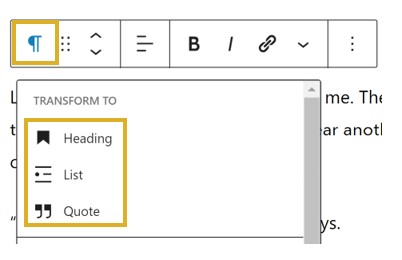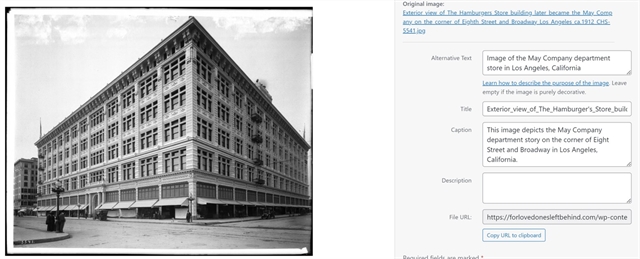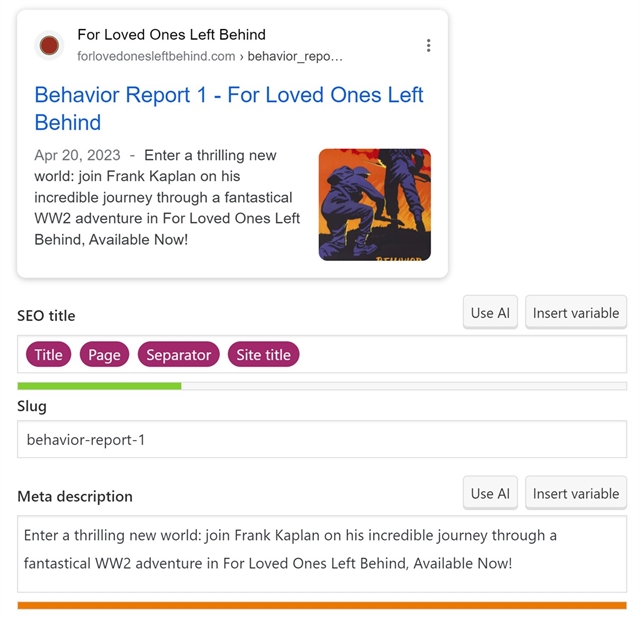This blog post opens a series written to help marketers realize the full potential of their WordPress websites.
Some Search Engine Optimization techniques are specific to WordPress for both B2B and B2C marketing. Marketers often overlook them; we don’t, and we’re here to help.
Let’s examine some best practices marketers can tap to enhance their WordPress sites’ visibility, drive organic traffic, outrank competitors, and elevate the online presence of their businesses.
Mastering Keyword Research
Keyword research is the most obvious best practice in digital marketing. It’s also one of the most misunderstood. Keyword optimization is the cornerstone of effective SEO, but only if done correctly.
We’ve found that marketers conduct keyword research with tools such as Google’s Ad Keyword Planner, SEMrush or Moz, which yield long lists of keywords. Marketers assume users enter these keywords and thus discover the marketers’ businesses and land on their websites.
It doesn’t always work that way. Both B2B and B2C marketers must first factor in their target audiences and take the preliminary step of understanding the language their audiences use.
B2B and B2C businesses create vocabularies and terminologies specific to their products and services. Potential customers might not know those terms. Marketers who apply this insider terminology in their keyword research can produce keywords that don’t align with user search queries.
Before conducting any keyword research, talk with your ideal customers and prospective customers. Learn more about how they refer to the products and/or services you offer. This research will open a new world of possible keywords that speak the native query language of prospective customers – while your competitors remain lost in translation.
How to Add Keywords Using WordPress
No plugin exists that automatically adds keywords to WordPress. The only way to truly integrate keywords strategically is to manually insert them into the titles, headings, and body text of your content. Don’t overdo it, though. Search engines can pinpoint keyword stuffing tactics, and they reward high-quality, user-focused content.
B2B and B2C marketers must write compelling, informative content that incorporates keywords, not just write content to fit the next keyword. Rule of thumb: If the content feels like a product placement ad in a movie, your keywords are showing in an embarrassing way.
Implementing On-Page SEO Techniques in WordPress
Plugins such as Yoast SEO and Rank Math are tools to help marketers review their SEO tactics. But they require manual processes.
WordPress offers marketers out-of-the-box tools to properly tag their content in accordance with SEO best practice: adding H1 tags (header tags), paragraph tags, ALT text, and so on. Avoid making page-specific changes to your content. Utilize global styles for your content tags to maintain uniformity across your website and to ensure proper tagging of content.
The Gutenberg editor in WordPress has made it significantly easier to quickly check content for proper tagging. When adding or editing content in the editor, use the properties tool to select the appropriate content tag.

Be certain to use the ALT Text, Title, and Caption fields when adding media content to your WordPress website. These can draw in potential site visitors who rely on image search to find your products or services.

Yoast SEO, Rank Math, and other tools provide additional fields to help you add keyword optimized URLs, page titles, and meta descriptions. They also allow you to create a more eye-catching search engine result.

What to Focus on for On-Page SEO Techniques in WordPress
B2B marketers should focus on keyword-optimized, valuable, and informative content around their products and/or services. Obvious, right? Until we stumble on the “valuable” part. Creating value involves factoring in the needs of your ideal customers and writing optimized content that responds to those needs.
B2C marketers should focus on creating captivating product/services descriptions that connect to their ideal customers intellectually and emotionally. High-quality images, video, and multimedia can enhance user experience.
Site Speed and User Experience
Marketers often slow down page load by piling on plugins and themes to keep up with the hot new things in WordPress. The dead weight of excessively large media files also drags on site speed.
Google regards site speed as an important search result ranking factor. Google wants to make users happy by linking them to answers on fast-loading websites. Google looks unfavorably at WordPress sites bloated with excessive code from plugins and media files -- and at the frustrating load times that go with them.
Available plugins offer tools to increase site speed by compressing images, leveraging browser caching, and utilizing a content delivery network (CDN). Plugins such as WP Rocket, Smush, and W3 Total Cache can automate many of these optimizations. But keep in mind that they, too, are plugins that can slow down your site.
What Can Marketers Do to Increase Page Speed on WordPress?
Annual audits of the plugins, themes, and media can help.
Audits often reveal duplicate plugins. More efficient plugins come on the scene often. One new multi-function plugin might do the jobs of several older, more limited plugins.
WordPress automatically adds a new theme every year. This can build up an extensive list of themes stored on an environment. Marketers should review their themes annually to make sure that they have only the themes they use.
Frequent review of the media folder in WordPress can result in significant database efficiencies. Marketers should run a tool, such as Smush, to optimize the images and files stored in the media folder. We often find gigabytes of obsolete data ripe for removal on websites that haven’t been optimized in a long time.
Creating a Multi-Screen Strategy
Think about your daily online usage. How many different sized screens do you use to consume digital content? The best practice for both B2B and B2C marketers is to test their websites on every device they can get their hands on!
So don’t stop with smartphones; expand your thinking and practices to all devices.
According to Exploding Topics, the average American spends about seven hours per day consuming content on a screen. That screen can be a phone, tablet, small or large laptop, widescreen or normal sized monitor, and/or televisions of all sizes. All of this justifies a “multi-screen" strategy. WordPress and third parties provide responsive themes, which offer the best opportunity for your site to display well on all screens.
Think about those multiple screens when you build content. For example, tables often don’t work well on small displays. Try to devise a way to present data that doesn’t involve a table and thus displays well on all screens.
Websites optimized to display well on all devices convert at a 40% higher rate than non-optimized sites, according to research conducted by Web FX.
Conclusion
Simply installing a plugin won’t solve the riddle of WordPress SEO. B2B and B2C marketers must combine manual and automated processes with tools from various sources to get the most out of their websites. Successful SEO requires ongoing effort:
- Continually monitor your website’s content and industry’s keywords to engage your audience.
- Regularly analyze your site's performance through tools such as Google Analytics and Google Search Console.
- Audit your technology and media files to make sure your website is optimized for speed.
- Routinely test your website and new content for display across all devices.
- Stay informed about industry trends and algorithm updates to ensure your WordPress site remains optimized for success.
Feeling overwhelmed and needing help keeping your WordPress website up-to-date, secure, and user friendly? Reach out! Our Worry-Free WordPress services offer peace of (digital) mind so you can focus on other priorities.






